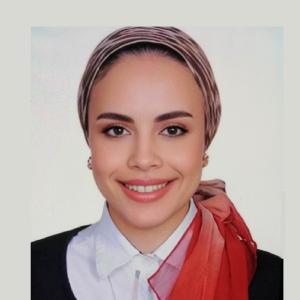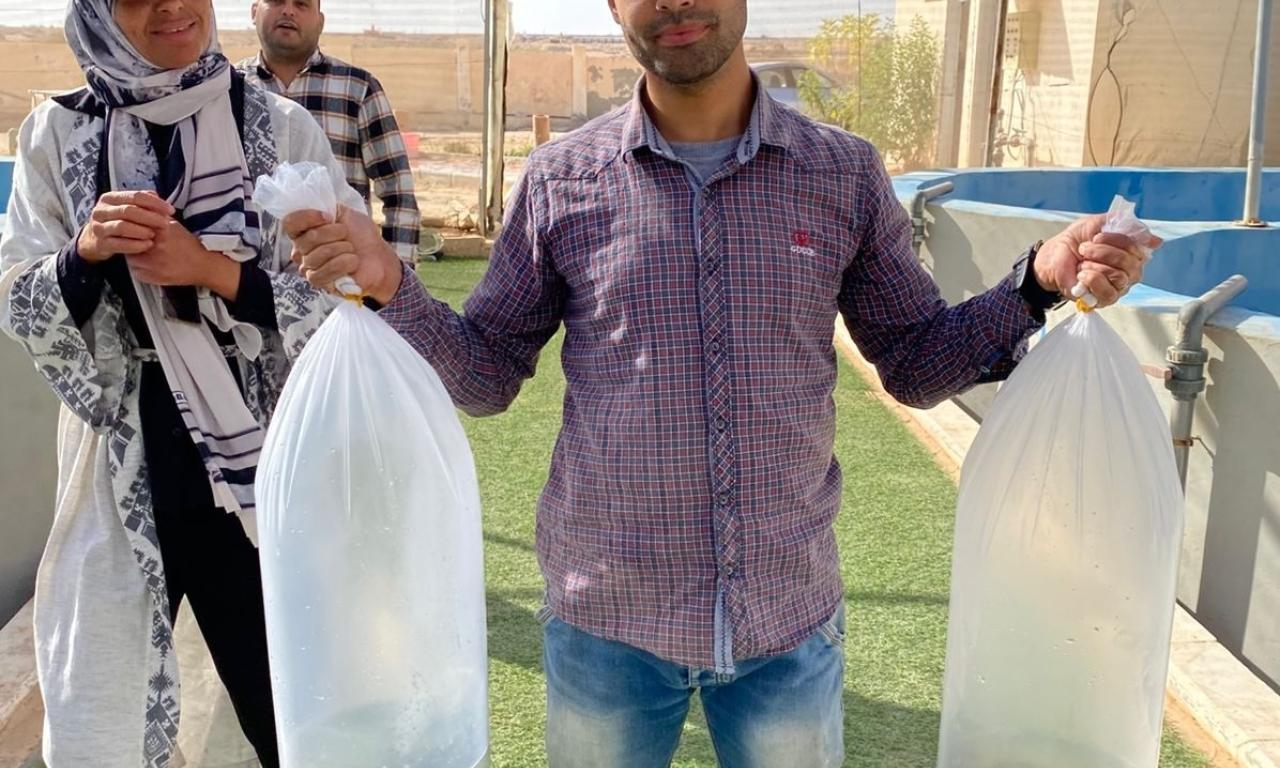
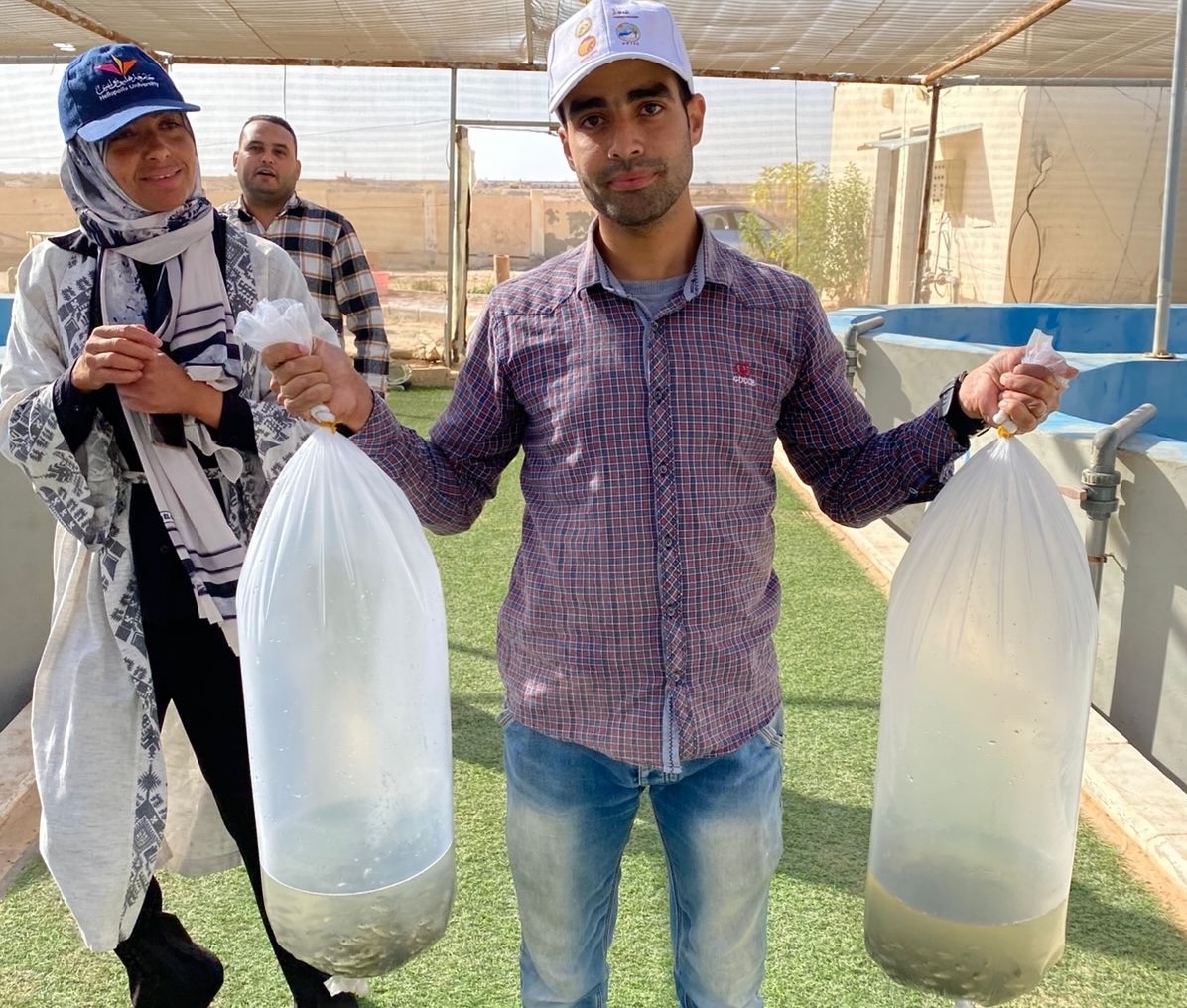
The arid coastal regions of Egypt present a unique environment for aquaculture development, characterized by limited freshwater availability and elevated salinity levels. In Matrouh governorate—a vast northwest region defined by a 520-kilometer Mediterranean coastline—these challenging conditions create a critical proving ground for sustainable aquaculture in arid regions. Aiming to address these environmental constraints for a viable pathway to enhance food security and livelihoods, WorldFish is implementing a strategy that synergizes the areas of work and objectives of two CGIAR science programs – Scaling for Impact (S4I) and Sustainable Animal and Aquatic Foods (SAAF). The strategy combines participatory, community-led dialogue with the supply of an improved Nile tilapia ‘Abbassa’ strain with 28 percent faster growth rate and enhanced resilience, to scale out aquaculture.
A New Initiative to Reach 1,200 Farmers
As part of the strategy, WorldFish launched the ‘100 Integrated Aquaculture Ponds’ initiative in Matrouh in partnership with the Sustainable Development Center for Matrouh Resources (SDCMR). The initiative aims to support 100 private sector-led Integrated Agriculture-Aquaculture (IAA) farms, managing approximately 247 acres (238 feddan). It is expected to benefit around 1,200 farmers and their families. The initiative will serve as a cornerstone for building climate-resilient aquatic food systems in Matrouh by directly addressing the critical challenge of access to quality fish seed, while enhancing coordination to scale IAA systems into new agricultural areas—particularly the Moghra.
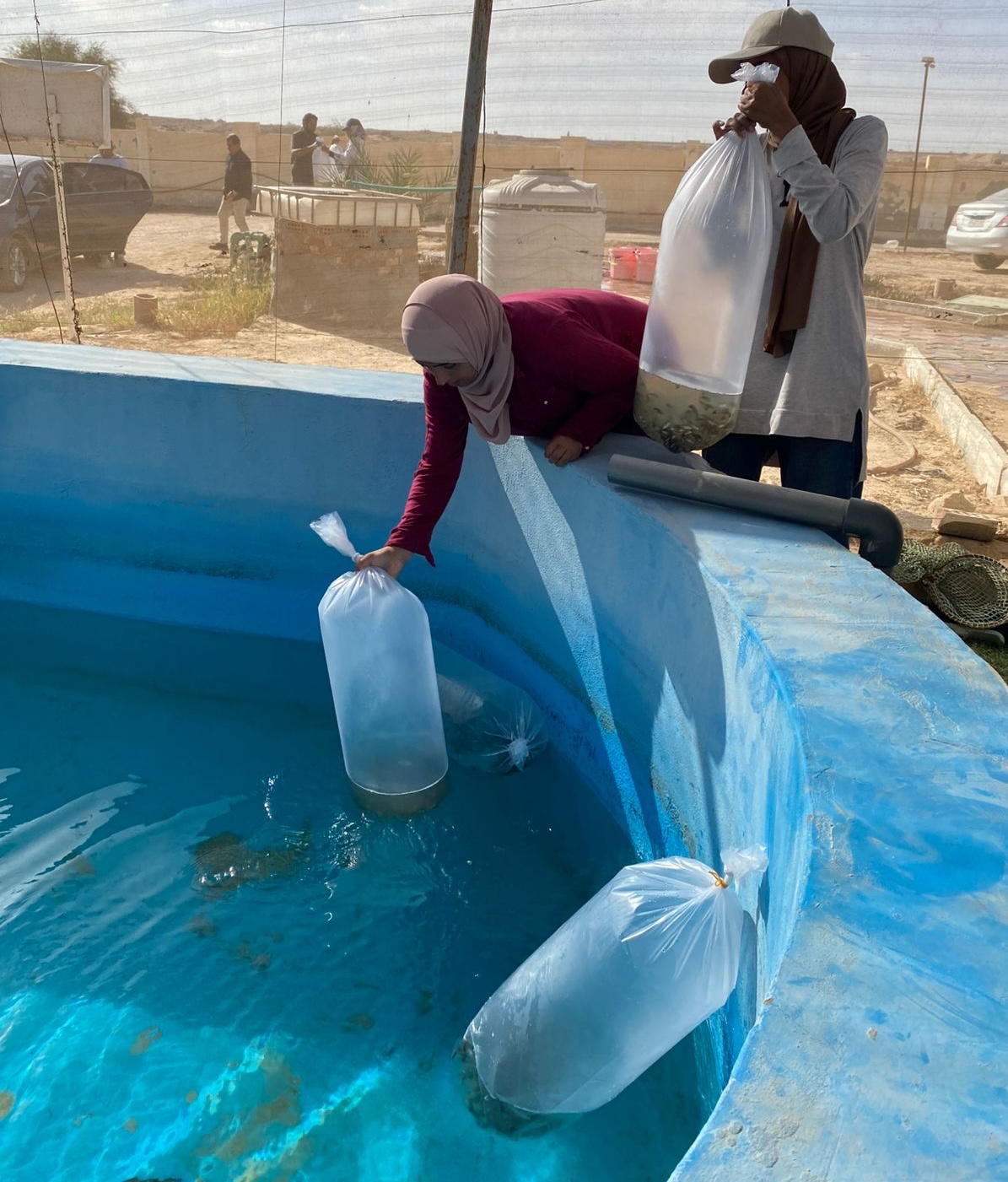
“The Abbassa research team conducted a preliminary assessment of the existing aquaculture infrastructure in Moghra and held discussions with local farmers. This engagement was vital to tailor management practices to the local context and ensure the broodstock’s long-term viability and productivity,” said Haytham Abd El Ghaffar, Scientist, WorldFish Egypt.
As a foundational step in launching the initiative, a technical support visit was conducted to the Applied Research Centre in Matrouh to initiate collaboration on operationalizing a tilapia hatchery. WorldFish delivered and acclimatized 10,000 mixed-sex Abbassa strain tilapia fingerlings to the center’s hatchery to help establish a localized broodstock.
“The Abbassa strain demonstrates commendable performance traits and its deployment in Matrouh governorate is a targeted intervention to secure the productivity of the aquaculture component of IAA farms. This can then synergistically support agricultural activities through nutrient-rich water reuse, even in conditions where soil salinity limits conventional crop yields,” shared Ahmed Nasr-Allah, Country Representative, WorldFish Egypt.
The Moghra Center for Supporting Farmers sees the interventions as an opportunity to increase productivity of farmers in the water-constrained region.
“IAA is one of the pillars of sustainable development in Moghra and creates an opportunity to provide fertilizers that will improve the quality of agricultural products and crops. We also aspire for WorldFish’s initiative to help farmers enhance their income by increasing productivity and profitability, while reducing operational costs through the implementation of good practices in integrated farming,” said Amr Ibrahim, Manager, The Moghra Center for Supporting Farmers, Matrouh governorate.
Alignment with Egypt’s National Priorities
The local intervention in Matrouh is strategically aligned with Egypt’s national priorities. At a recent workshop convened by the Academy of Scientific Research and Technology in Cairo, Nasr-Allah, highlighted the role of climate-resilient aquaculture technologies in Egypt’s development plans. The integrated scaling approach disseminates resilient fish strains like the Abbassa and incorporates crops such as olive, jojoba and peppers. This creates a symbiotic system where water, enriched by aquaculture nutrients, is recycled to irrigate adjacent crops. This synergy maximizes nutrient cycling and water use efficiency, significantly boosting production per drop of water.
Furthermore, establishing a broodstock nucleus through the ‘100 Integrated Aquaculture ponds’ local initiative, can enable a self-sustaining seed supply system, reducing external dependencies and empowering local communities.
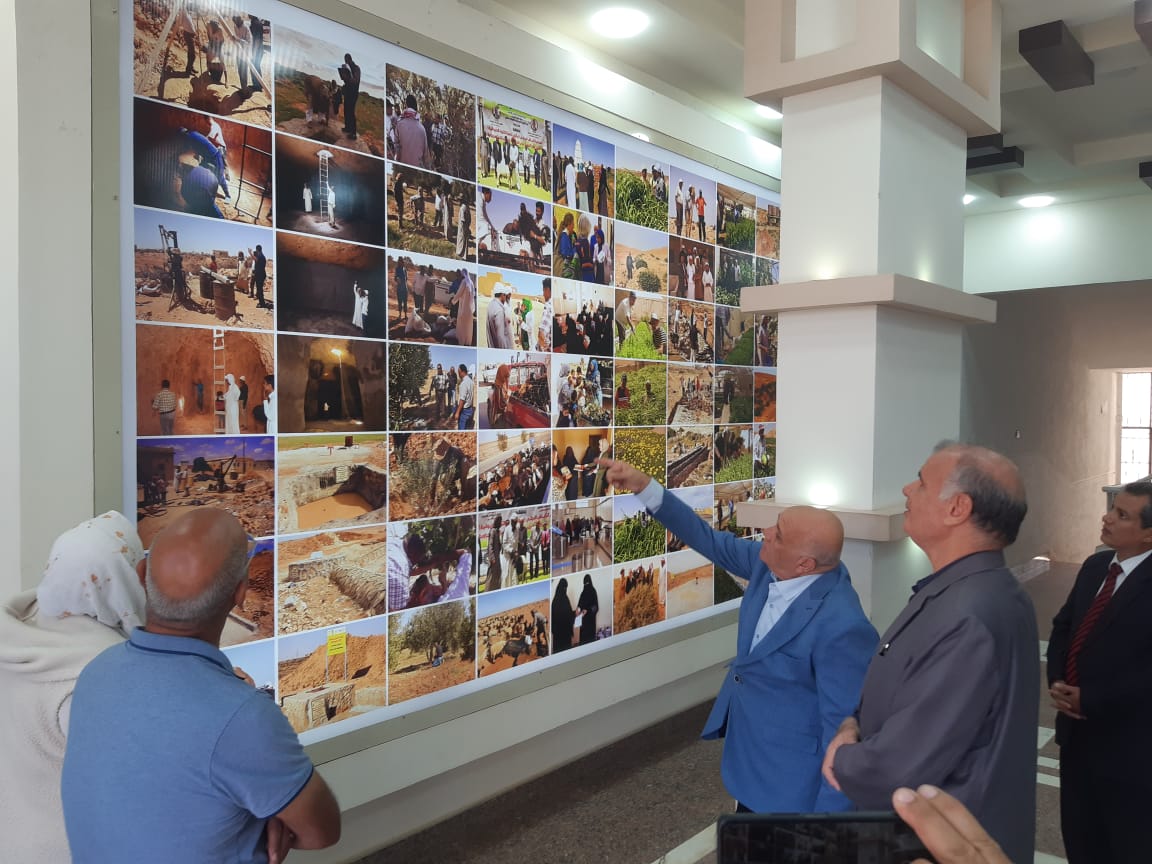
The Road Ahead
WorldFish will continue to collaborate closely with SDCMR to develop a comprehensive technical and capacity-building plan focused on hatchery operations and farmer training. Plans also include a follow-up technical support visit to Moghra to assess farm-level advancements and provide hands-on technical support onsite.
“Our goal is to create added value, which, from my perspective, will transform the project into both practical and financial success. We aim to provide a product that is better suited to the nature of the location, thereby generating income for the farmers. We are working to establish Moghra as a center for fish farming and an emerging market,” said Samira Eid, Aquaculture Engineer, a participant in the ‘100 Integrated Aquaculture Ponds’ initiative.
The project is implementing a rigorous approach of continuous monitoring, learning and adaptation for successful scaling, aligned with and to contribute to the performance assessments of CGIAR’s S4I and SAAF programs to help refine and improve their future efforts. The next phase involves continuous technical support for broodstock management, rigorous monitoring of growth performance under local saline conditions.
The strategy implemented under ‘100 Integrated Aquaculture Ponds’ initiative could serve as a model approach to sustainably increase productivity and incomes of farmers and communities dealing with scarce natural resources.
Cover photo: Delivery of 10,000 mixed-sex Abbassa strain tilapia fingerlings to the Applied Research Centre hatchery in Matrouh. Photo: Ashraf Khairy, WorldFish.
